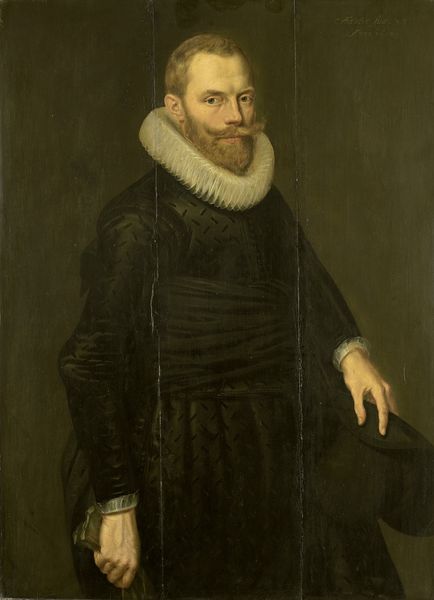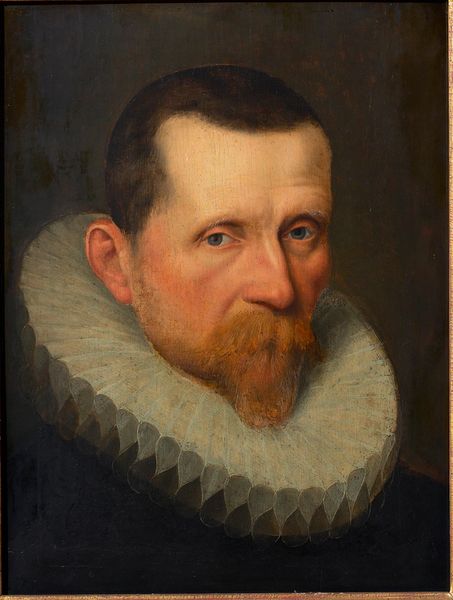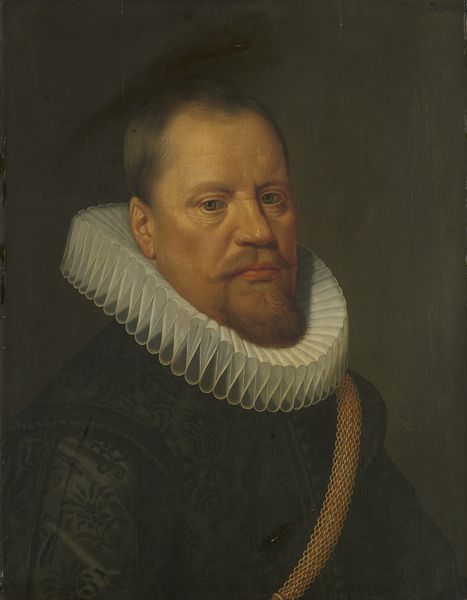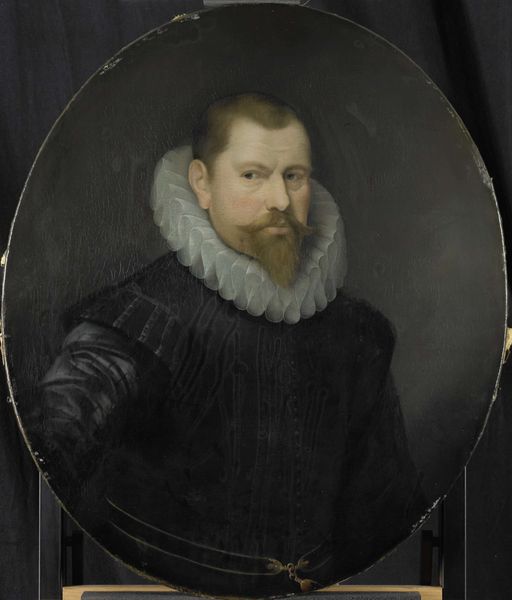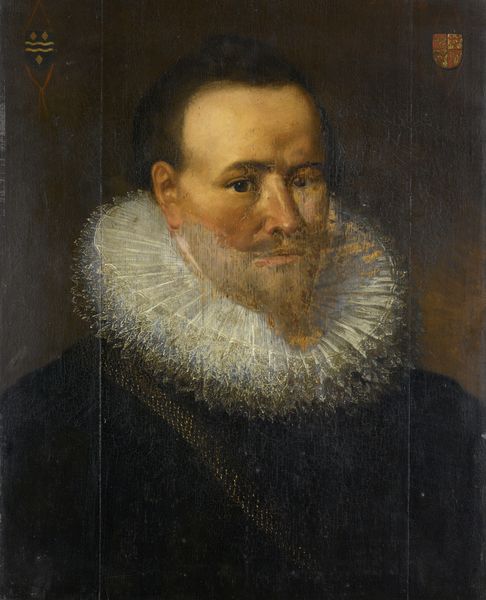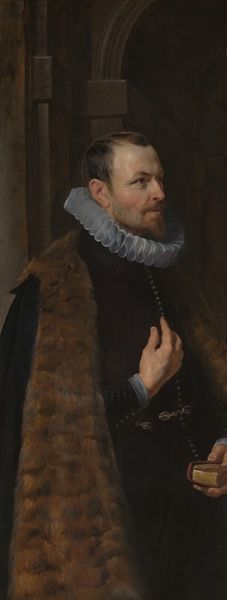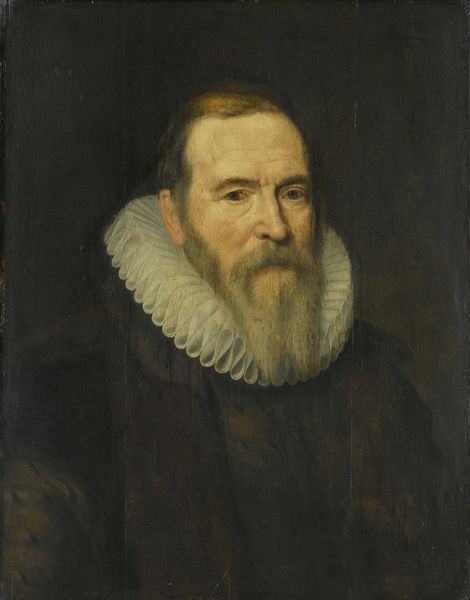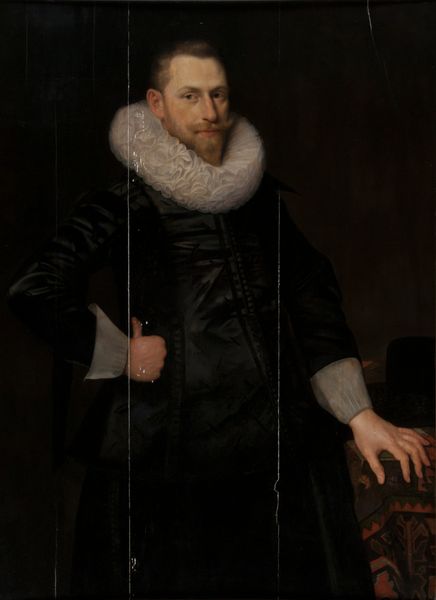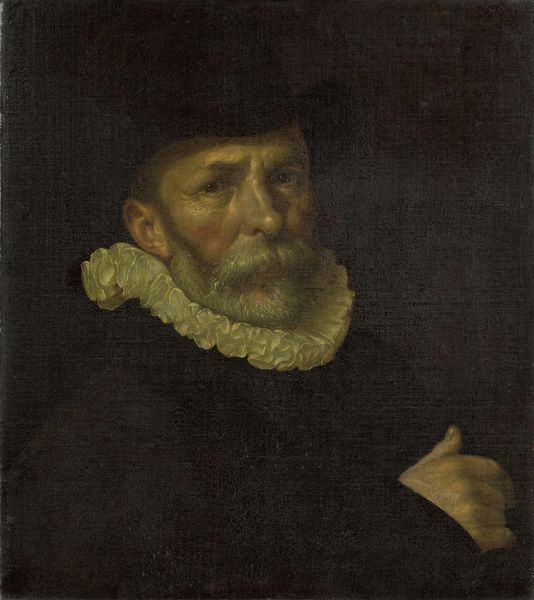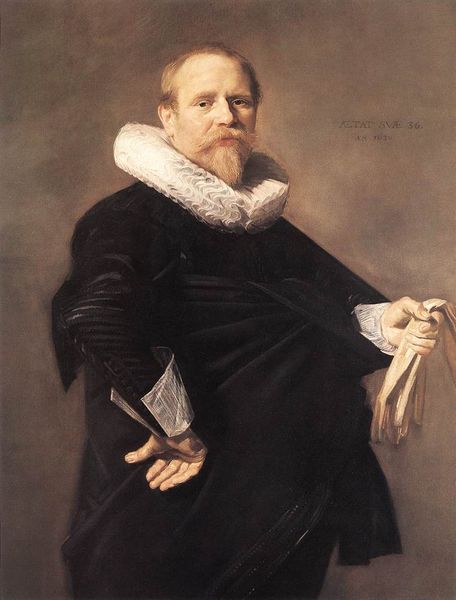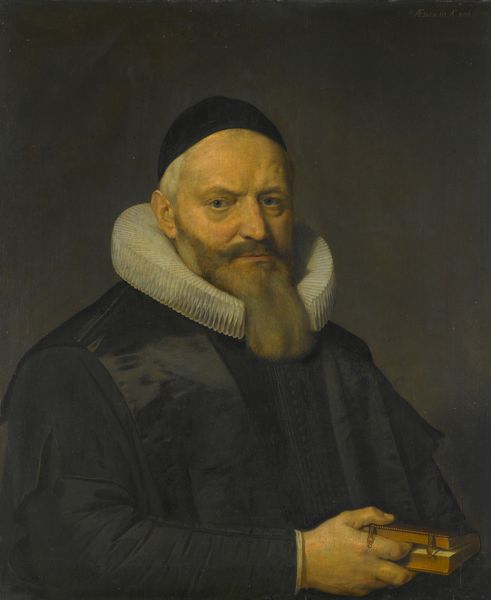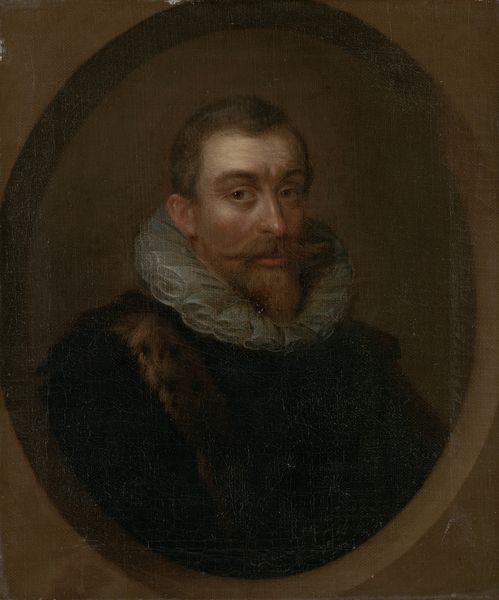
Jacob Cornelisz Banjaert, called van Neck (1564-1638), Admiral, Burgomaster and Councilor of Amsterdam 1605
0:00
0:00
painting, oil-paint
#
portrait
#
baroque
#
painting
#
oil-paint
Dimensions: height 102 cm, width 82 cm, depth 10.5 cm
Copyright: Rijks Museum: Open Domain
Editor: This is a portrait of Jacob Cornelisz Banjaert, painted in 1605 by Cornelis Ketel, using oil. The admiral has quite the serious expression, and the details in the ruff around his neck are really captivating. What do you see in this piece beyond the subject’s likeness? Curator: Beyond a simple depiction of status, it’s a fascinating snapshot of Dutch society wrestling with its identity. Notice the stark contrast of light and shadow – classic Baroque, right? But consider the context: this portrait was created during the early stages of the Eighty Years' War, when the Dutch Republic was fighting for independence from Spain. What does it suggest about how identity, gender, race, and politics shaped civic representation? Editor: That's a very interesting point, his rigid and somewhat dark clothes would certainly highlight the seriousness of his social and political position, but could they suggest a feeling of restraint? Curator: Exactly! Think about it: Banjaert was not just an admiral, but also a burgomaster and councilor of Amsterdam. This portrait isn't just about individual achievement. How could it reflect the shifting power dynamics and burgeoning mercantile class in Amsterdam? Who, back then, had access to such depictions, and whom were those depictions designed to serve and persuade? Editor: So, it's not just a portrait of a man, but a symbol of a very specific moment of political and social transformation in the Dutch Republic. The artist captured both the sitter and society. I wonder what Jacob Banjaert thought of the portrait? Curator: An excellent question, and one that takes us out of speculation and plants us into a focused engagement with history. Perhaps this single portrait is one part of a puzzle, in need of more pieces. What do you think? Editor: Indeed! This artwork shows the interplay between art, history, and identity, leaving a lot for interpretation and further analysis. Thanks so much for the insight.
Comments
No comments
Be the first to comment and join the conversation on the ultimate creative platform.
